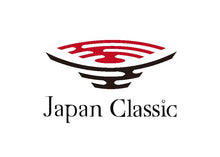【Japanese Pottery】Why Pottery Retains Heat Better.
About the Author
Hayato Eihara
I am a Japanese resident living in Japan!
With years of experience, I share in-depth and detailed information about Japan with the world.
As part of my mission to promote Japanese culture, I also run Japan Classic, an online shop specializing in unique, high-quality tableware. If you're interested, feel free to check it out!
Pottery retains heat better than porcelain due to its porous structure, which traps air and slows down heat loss. This makes it ideal for matcha bowls and earthenware cooking pots.
Table of Contents
- 1. Which Retains Heat Better: Pottery or Porcelain?
- 2. The Role of Air in Heat Retention
- 3. Benefits of High Heat Retention in Pottery
- 4. Matcha Bowls and Heat Retention
- 5. Earthenware Pots and Heat Retention
- 6. Conclusion
1. Which Retains Heat Better: Pottery or Porcelain?
To compare the heat retention of pottery and porcelain, simply pour hot water into vessels made of both materials with the same thickness. Pottery warms up slowly, while porcelain heats up quickly. After 10 minutes, if you pour out the hot water, the pottery remains warm for a longer period. This means that in terms of maintaining a stable temperature (heat retention), pottery outperforms porcelain.
・Pottery: Slow to warm, slow to cool = High heat retention.
・Porcelain: Quick to warm, quick to cool = Low heat retention.
The reason for this difference lies in the density of the material’s structure. Density refers to the amount of tiny gaps or air pockets inside the clay body.
- Pottery has a lower density, meaning it contains numerous microscopic air pockets.
- Porcelain has a higher density, meaning it is highly vitrified (glass-like) and contains almost no air pockets.
2. The Role of Air in Heat Retention
The air trapped within pottery acts as an insulator, helping it retain heat. Air, once warmed, tends to hold onto heat, but moving air loses heat more quickly. Since the air within pottery is trapped, it enhances the material’s heat-retaining properties.
A familiar analogy is a down jacket or a feather duvet, where the air pockets between the fibers trap warmth and help maintain body heat. Another good example is double-pane windows in cold climates. When two panes of glass are used instead of one, the air layer trapped between them acts as a barrier, reducing heat loss and preventing cold air from entering.
In the same way, pottery’s porous structure traps heat, preventing it from escaping quickly and keeping the vessel warm for a longer time.
3. Benefits of High Heat Retention in Pottery
Because pottery retains heat well, it takes longer to warm up, but once heated, it stays warm for a long time. This characteristic makes it ideal for matcha bowls (抹茶碗) and earthenware pots (土鍋).
4. Matcha Bowls and Heat Retention
Imagine holding a matcha bowl filled with hot tea. The heat transfers slowly, making it pleasantly warm to the touch rather than uncomfortably hot. For example, Raku ware (樂茶碗), a type of traditional Japanese tea bowl, absorbs heat gradually, ensuring that even if the tea is hot, the bowl remains comfortably warm.
If a glass bowl were used instead, it would conduct heat immediately, making it too hot to hold. This is why pottery, such as Raku, Hagi (萩焼), and Karatsu (唐津焼), is commonly used for tea bowls—it provides a gentle, long-lasting warmth.
5. Earthenware Pots and Heat Retention
Cooking in a clay pot (土鍋, donabe) also benefits from pottery’s heat retention. Even after the heat is turned off, the residual warmth continues cooking the food, ensuring that heat does not escape quickly. This makes earthenware perfect for simmered dishes and hot pot meals, where maintaining consistent warmth is essential.
In contrast, metal pots (iron or stainless steel) heat up quickly but also lose heat rapidly. Although they have high thermal conductivity, their heat retention is low.
6. Conclusion
The superior heat retention of pottery is due to its insulating air pockets, which slow heat loss. Because of its porous structure, pottery is specifically chosen for applications where maintaining warmth is beneficial, such as tea bowls and earthenware cooking pots.
Brighten Up Your Table.
We deliver vibrant, high-quality pieces directly from Japan to add color and elegance to your dining experience.







Leave a comment